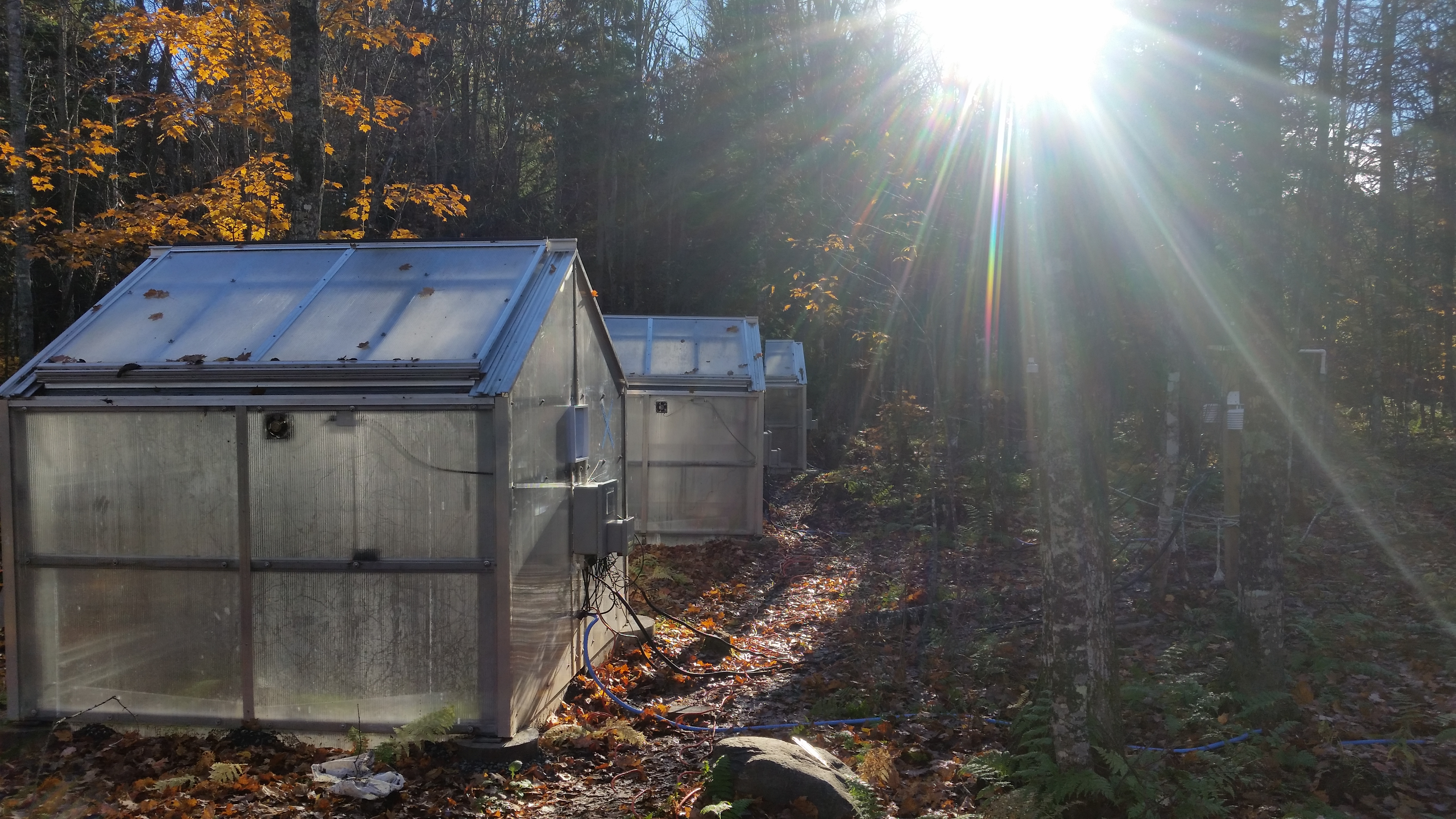
One micro greenhouse in Houghton captures current conditions, while two others on the site reflect climate change scenarios. Credit: Larry Werner
By CARIN TUNNEY
Capital News Service
As the snow falls and winter winds howl, mini-research labs in Houghton will capture information to predict how animals and plants might survive Great Lakes winters without a thick layer of snow.
Other testing sites are in Madison and Duluth.
“The U.P. (Upper Peninsula) is important for our research in that it captures an aspect of high snowfall that is difficult to find in other locations,” said Benjamin Zuckerberg, with the Forest and Wildlife Ecology Department at the University of Wisconsin, Madison. “The more northerly sites, like the one in the U.P. are critical for capturing the full range of possible snow cover for the Upper Midwest.”
Zuckerberg and his researchers will explore what is known as the subnivium, the layer between the ground and snow cover. Plants, insects, mice, frogs and other animals hunker down in the subnivium to survive winter and prepare for spring growth or breeding, said Kimberly Thompson a researcher on the project.
It’s a space teeming with life and one that is unknown to many people.
“I think there is a focus on different environments that people can see and relationships between animals that are more charismatic or visible,” Thompson said. “People usually associate winter with a time of decline, but with the life-process activities happening underneath the snow, that is contrary to what is going on.”
The subnivium protects life with relatively stable temperatures that are warmed by sunlight and by heat rising from the soil. Plants and animals remain in approximately 32 degree temperature, said Thompson. That may sound cold, but outside this space the study areas all recorded temperatures below zero last winter.
This relatively unexplored inner space is changing with the climate. And scientists want to know what that means for the survival of the organisms that depend on it.
“Across the region, we are seeing a shortening of the snow cover season both from the fall, but much more in the spring, so we are seeing a later onset and earlier snow melt,” Thompson said. “This has all kind of effects on the timing of plants’ reproductive strategies and their abilities to perform the life processes that they are timed with the season to do.”
The Intergovernmental Panel on Climate Change (IPCC) estimates global temperatures will rise 3 degrees to 12 degrees by 2100. The agency predicts that will have negative impacts on freshwater resources, food production and other climate systems.
How species will react is uncertain, according to a recent University of Wisconsin study published in PLOS.
That study concludes some animals may migrate north to preferable temperatures and snow conditions, as has been observed in other studies. However, those that can’t easily move north are vulnerable to population decline.
An indoor lab at the University of Wisconsin will use micro-greenhouses, including two on the campus of Michigan Technological University in Houghton, to simulate the effects of climate change within the subnivium and help predict what could happen to various species, Thompson said.
The nine-foot square greenhouses are automated to sense precipitation and temperatures, she said. When sensors detect rain or snow, the peaked roofs open to allow the precipitation to enter while gauges maintain the desired temperatures and signal if heating or venting are needed.
Each site has three micro-greenhouses. One is set to the outdoor temperature, while the others are set slightly warmer to replicate future climate change scenarios.
Scientists will study a variety of plants and animals living under the snow.
One project examines how climate change might impact wood frogs, one of about a dozen frog species in North America that can freeze without significant stress to their bodies, said Larry Werner, a lead researcher on the project.
The more a frog freezes and thaws with the snow, the more energy they use, he said.
According to Werner, energy is like money. Once it is spent, it takes time to replenish your wallet. In the meantime, you’re limited in what you can do.
He investigates how frogs adapt to warmer temperatures and if their bodies can endure the more frequent freeze-thaw patterns caused by climate change in northern zones.
Next year, scientists will use measurements from the micro-greenhouses and apply them to wood frogs refrigerated at the lab, Werner said. It will show how the animals might react in warmer weather and to more freezing and thawing.
Researchers said the tree frog research is one example of the projects done at the lab. Others include research above the subnivium.
A recently published a study found climate change is already impacting snowshoe hares, a species native to Wisconsin, Minnesota, northern Michigan and New York.
“Snowshoe hares are really linked into snow conditions. They turn white in the winter, but more and more what we are seeing in the southern distribution is they turn white, but there is not a lot of white behind them so that whole camouflage approach loses its benefit,” Pauli said.
This makes them easy targets for prey.
The research also found snowshoe hares are moving away from native areas and north to areas with more snow cover.
Besides learning how climate change impacts species, researchers are investigating ways to offset the effects. One idea is increasing forest undergrowth to help maintain snow cover for plants and animals that depend on it, researchers said.
“Those temperature profiles may not exist in the future, and finding out what that means and being prepared for it is going to be pretty important,” Werner said.
Carin Tunney writes for Great Lakes Echo,